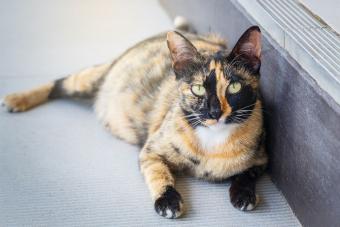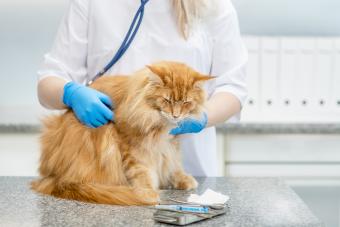
If you are concerned about your pet's weight,referencing our a cat weight chart can put your mind at ease. Understanding each weight classification can give you insight into whether your cat is currently at a healthy weight. There's no easy answer to how much a cat should weigh, but a visual examination and comparison can help you assess your pet's condition.
Ideal Cat Weight
It is difficult to create a chart that has exact weights because the healthy weight for a cat can vary with by size, sex, age, and breed. However, these average ideal weights for each size can give you an idea of where your cat falls on the scale.
| Cat Size | Average Adult Weight |
|---|---|
| Teacup (ex. Munchkin, Singapura) | 4 to 9 pounds |
| Small (ex. Siamese, Devon Rex) | 8 to 12 pounds |
| Medium (ex. Bengal, American Shorthair) | 10 to 15 pounds |
| Large (ex. Maine Coon, Ragdoll) | 13 to 18 pounds |
Visual Weight Chart for Cats
Instead of focusing solely on the number showing on your scale, it is much more accurate to assess your cat's weight visually and manually. Weight classifications can serve as a valuable tool. Along with each illustration, we've included the characteristics of the weight classification.

Emaciated

- It's easy to see the cat's skeletal structure. You can easily see and feel the ribs, vertebrae, and pelvic bones. The neck is thin.
- The cat's waist is unhealthily narrow, and the abdomen is concave.
- There is no obvious fat, and the cat may have dull fur and appear generally unhealthy.
Underweight

- While the ribs might not be easy to see due to the fur, they are easy to feel. The backbone may be easy to see and is obvious when you run your hand over the cat's back.
- The waist is clearly defined, and the abdomen may be concave.
- There is little fat on the cat's body.
- This cat may have worms.
Ideal Weight

- You can feel the ribs, but they are not visible when you look at the cat.
- Looking down on the cat, you can see a waist. The abdomen is slightly concave; this creates a smooth curve from the chest.
- This animal has a healthy appearance and will often live a longer life.
When you're feeling your cat's ribs, don't press in hard. The idea is not to prove your cat is at their ideal weight; if you honestly can't feel their ribs with light pressure, they may be overweight.
Overweight

- While you can feel the ribs, there is an obvious layer of fat across them.
- The abdomen is slightly rounded.
- The cat has folds on the flanks that jiggle when it walks.
Obese

- You cannot easily feel the ribs, and the fat on the cat's sides is easy to feel.
- The abdomen is rounded.
- The flank folds are prominent and "wave" when the cat moves.
- This cat does not want to be very active.
Discuss Your Cat's Weight With Your Vet
It is important to evaluate your cat's condition before choosing a cat food. While a cat that is a normal weight may not need a special diet, a cat that is severely under- or overweight will probably have special caloric needs. Check with your vet if you have any concerns about your animal's size, shape, or overall health. Your vet can give you a more accurate assessment of your cat's body condition and make personalized suggestions for feeding your cat based on their weight.







